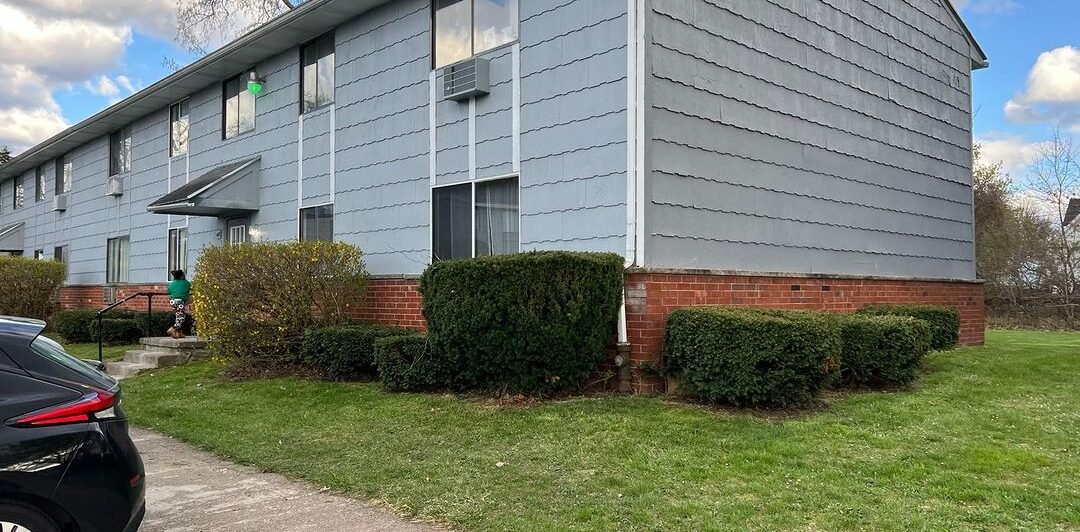How Winter Affects Your Lawn in Amherst, NY
Winters can be harsh, but your lawn is not dead. It is just taking a rest. Winter is their dormant season. During cold months, grass conserves energy, water, and nutrients until spring returns. This is why your once-green lawn turns brown. That means you still have time to save your lawn.
However, with frequent frost, winter conditions are still harsh on your lawn. Winter nights experience freezing temperatures, and so does your lawn. The water vapor in the air is subject to these temperatures and freezes, creating a layer of frost on the lawn. Frost steeps into the blades and soil, causing cell damage, soil heaving, and weakened root systems.
You can’t control the weather but can minimize winter damage with proper lawn maintenance and care. Investing in lawn care professionals in your area can make all the difference.
Why Spring Cleanup is Essential for a Lush, Healthy Lawn in Amherst, NY
Spring cleanup is essential for a healthy lawn in Amherst, NY. It removes winter debris, promotes air circulation, and prevents fungal diseases and pests.
Here are several reasons to do lawn maintenance and lawn care right after the winter:
- Winter storms bring leaves, twigs, and branches to your lawn.
- Dead grass also piles up over winter, blocking sunlight and air from reaching your lawn.
- Snow promotes mold and other fungal issues that grow in damp, compacted lawns.
- Winter makes the lawn weak due to lack of sunlight. Weeds love weak, neglected lawns.
Now, you have an idea about the importance of a spring cleanup. A well-maintained lawn recovers faster from winter damage in spring. Lawn fertilization programs in your area provide essential nutrients to kickstart healthy growth.
Step-by-Step Spring Clean-Up Guide
Whether you are doing a DIY spring cleanup or hiring professionals, knowing the steps for spring cleaning is essential to ensure the process runs smoothly.
Remove Debris to Clear the Lawn
First, you need to clear your lawn. Winter storms leave fallen branches, leaves, and other debris, such as old mulch, on the lawn. Take a walk around your yard and pick up all the debris. You can use methods such as raking to remove it and let sunlight and air in.
Now you have a clear lawn, but it is still not clean. Let’s move to the next steps.
Dethatch for Proper Water and Nutrient Flow
A layer of dead grass, also known as “thatch” due to frost, can build between the soil and grass blades. This layer prevents water and nutrients from reaching the lawn’s root system. Use a dethatching rake or power dethatcher to break up this layer.
Weed Removal for a Clean Lawn
Once you detach your lawn, weeds grown during winter can be clearly visible. Pluck them away by hand. When you remove a weed, make sure to get rid of the entire root system. This helps to increase the effectiveness of upcoming steps.
Now you have an almost clean lawn. It’s time to treat it.
Aerate the Lawn for Healthy Root Development
Aeration creates small holes in the soil, allowing air, water, and nutrients to reach the roots. This avoids weak grass growth. You can utilize a core aerator and create tiny holes in the lawn to improve oxygen and nutrient flow.
Soil Testing to Identify Soil Status
Winter can cause variations in the soil on your land, making it more alkaline or acidic. Therefore, it is essential to test the soil’s pH levels. Soil testing also helps you to identify the most required nutrients and other nutrient levels needed for the soil.
Lawn Fertilization for Better Growth
Based on the results from soil tests, choose a fertilizer that provides the necessary nitrogen, phosphorus, and potassium for optimal growth. Do not unnecessarily apply fertilizers since the lawn is recovering from winter damage.
It is better to get help from professionals for this.
Weed Control in the Long Run
So far, you have eliminated weeds on your lawn. But to keep the lawn weed-free for a long time, you must take steps to control them. You can apply a pre-emergent herbicide to prevent weed seeds from germinating.
Reseeding for Even Growth
Your lawn has now been prepared for new seedings for even growth. Inspect the lawn for thin or bare spots and reseed those areas. Make sure to choose a high-quality grass seed suited to your existing lawn. Do not forget to water the area until new growth is established.
After completing the above steps, your lawn is ready for the season of renewal. However, you must pay attention to ongoing maintenance to preserve its acquired beauty.
Additional steps like mulching, rearranging the flower or plant beds, and cleaning your outdoor elements (furniture) will increase the lawn’s effectiveness while enhancing its curb appeal.
